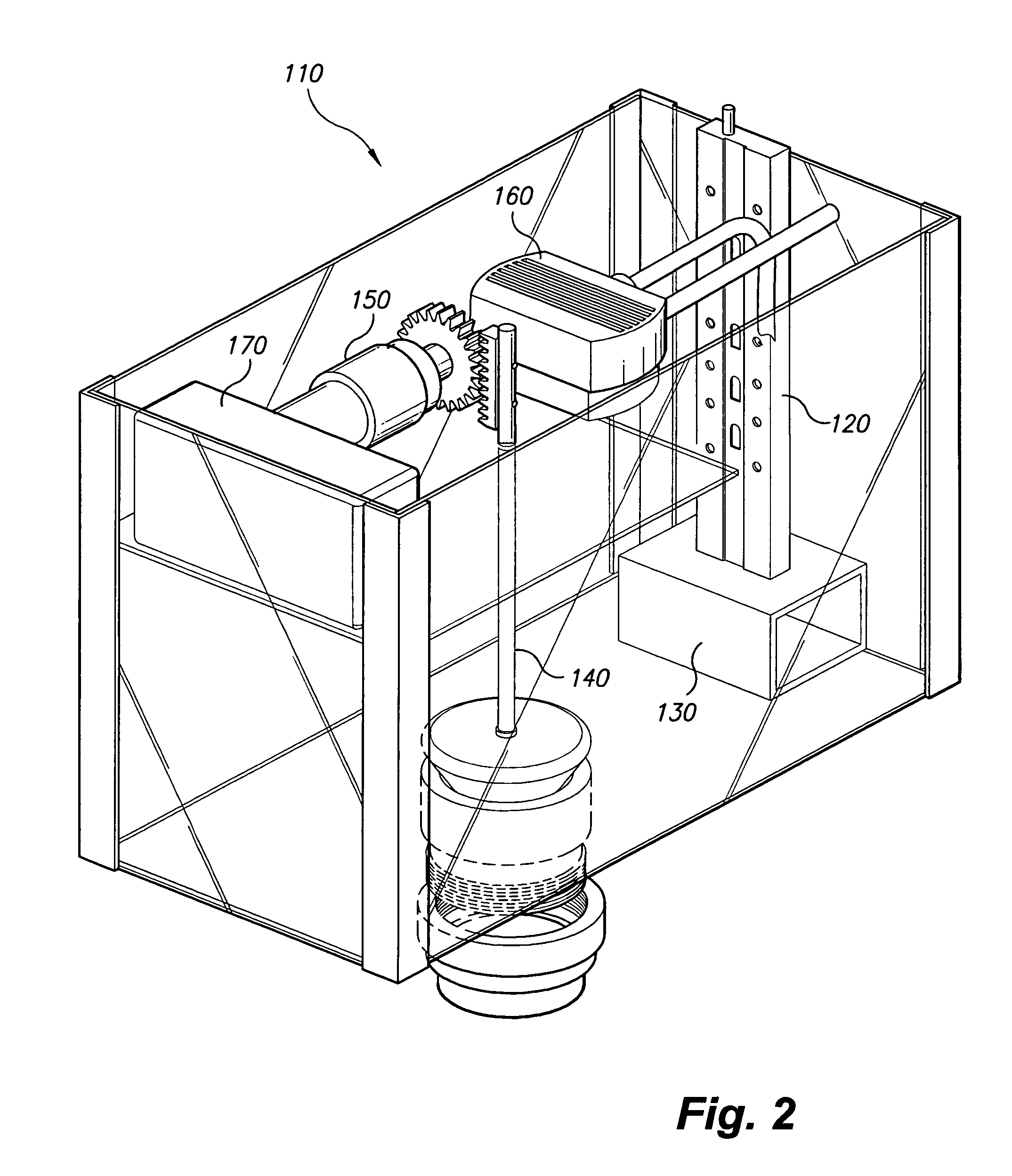Digital electronic volume/flow control sensor toilet
a digital electronic and sensor toilet technology, applied in the field of toilets, can solve the problems of increasing water bills for consumers, deteriorating rubber seals around flapper valves, and leakage typically occurring
- Summary
- Abstract
- Description
- Claims
- Application Information
AI Technical Summary
Benefits of technology
Problems solved by technology
Method used
Image
Examples
Embodiment Construction
[0035]The present invention is a digital electronic volume / flow control sensor toilet. The invention disclosed herein is, of course, susceptible of embodiment in many different forms. Shown in the drawings and described herein below in detail are preferred embodiments of the invention. It is to be understood, however, that the present disclosure is an exemplification of the principles of the invention and does not limit the invention to the illustrated embodiments.
[0036]Referring to the drawings, FIGS. 1–11 show various digital electronic volume / flow control sensor components of a digital electronic volume / flow control sensor toilet 100 according to the present invention. It is the full intent of the inventor that the digital electronic volume / flow control sensor components described herein may either be fully integrated in a newly manufactured toilet or utilized to retrofit an existing toilet. The components themselves may be provided to users as a kit for retrofitting an existing ...
PUM
 Login to View More
Login to View More Abstract
Description
Claims
Application Information
 Login to View More
Login to View More - R&D
- Intellectual Property
- Life Sciences
- Materials
- Tech Scout
- Unparalleled Data Quality
- Higher Quality Content
- 60% Fewer Hallucinations
Browse by: Latest US Patents, China's latest patents, Technical Efficacy Thesaurus, Application Domain, Technology Topic, Popular Technical Reports.
© 2025 PatSnap. All rights reserved.Legal|Privacy policy|Modern Slavery Act Transparency Statement|Sitemap|About US| Contact US: help@patsnap.com



